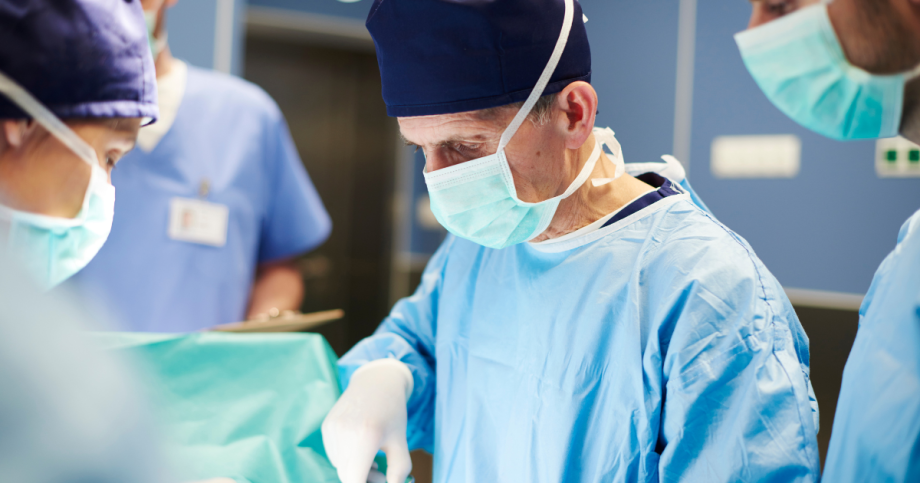Partial hand amputations can have a significant impact on daily life, affecting both function and independence.
At OrthoCarolina, surgeons are pioneering advanced procedures and patient-centered care models to help individuals regain dexterity, strength, and confidence. One groundbreaking approach is the Starfish Procedure, which provides partial hand amputees with independent control of myoelectric prosthetic fingers. Alongside innovative surgery, OrthoCarolina emphasizes a multidisciplinary care approach, supporting patients’ physical, psychological, and social recovery.

Understanding Partial Hand Amputations
Partial hand amputations occur when one or more fingers or parts of the hand are lost due to trauma, infection, or vascular complications. While traditional prosthetics help restore function, many devices do not allow for individual finger movement, making fine motor tasks challenging.
Patients often face difficulties performing everyday activities like opening a door, picking up objects, or using tools. Beyond physical challenges, the loss of a hand segment can affect psychological well-being, emphasizing the need for holistic, patient-centered care.
Introducing the Starfish Procedure
The Starfish Procedure is a surgical innovation developed at OrthoCarolina to enhance prosthetic function for partial hand amputees. The procedure involves transferring surviving interosseous and lumbrical muscles to a more superficial location on the dorsum of the hand. This allows surface electrodes to detect muscle contractions, which then control individual myoelectric prosthetic fingers.
This approach addresses a major limitation of traditional prosthetics. Previously, myoelectric fingers often moved together as a group, requiring patients to learn unnatural hand movements. With the Starfish Procedure, patients gain intuitive control, enabling each prosthetic finger to move independently and naturally.
How the Procedure Works
- Muscle Preservation and Transfer: Surgeons carefully preserve the neurovascular pedicles of viable intrinsic hand muscles. These muscles are then transferred to a superficial location on the hand.
- Electrode Placement: Surface electrodes are positioned over each transferred muscle, allowing precise detection of electrical signals during muscle contraction.
- Prosthetic Integration: The detected signals are linked to myoelectric prosthetic fingers, giving patients the ability to flex, extend, and manipulate each digit individually.
The Starfish Procedure has shown success in patients regaining the ability to perform daily tasks, from lifting objects to operating tools, all with greater ease and precision.
Candidates for the Starfish Procedure
The ideal candidates are individuals who have:
- Undergone a partial hand amputation
- Retained viable intrinsic hand muscles
- Adequate nerve innervation and blood supply to allow for muscle transfer
This procedure is applicable for amputations resulting from trauma, infection, or vascular complications. Preservation of any remaining musculature is a key principle, ensuring that each patient’s unique anatomy is optimized for functional restoration.
Multidisciplinary Care at OrthoCarolina
Beyond surgery, successful rehabilitation depends on a team-based approach. OrthoCarolina’s Reconstructive Center for Lost Limbs integrates surgeons, prosthetists, therapists, psychologists, and nurse case managers to provide comprehensive care.
Benefits of Multidisciplinary Clinics
- Optimized Surgical Planning: Surgeons collaborate on each case, ensuring every patient receives the most effective treatment.
- Enhanced Rehabilitation: Physical and occupational therapists guide patients through therapy and virtual reality training to maximize prosthetic use.
- Psychological Support: Routine screening for PTSD and depression ensures patients receive timely referrals to mental health professionals.
- Social Support Networks: Private waiting rooms and patient events foster peer connections and practical learning opportunities.
- Return-to-Work Guidance: Case managers and therapists help patients navigate workplace accommodations and vocational rehabilitation.
This comprehensive care model allows patients to regain both functional independence and emotional resilience, supporting long-term recovery.
Education and Research Integration
OrthoCarolina also emphasizes education for healthcare professionals and ongoing research. Surgeons participate in cadaver labs and hands-on workshops to learn procedures like the Starfish Technique. Research initiatives track patient outcomes, prosthetic use, and quality-of-life measures. This data supports continuous improvement and the development of best practices for upper extremity amputees.
Patient Outcomes and Success Stories
Patients who have undergone the Starfish Procedure demonstrate remarkable functional gains. Many regain the ability to:
- Lift objects weighing up to 20 pounds
- Open doors and use common household tools
- Perform fine motor tasks such as picking up small objects or using gardening equipment
These outcomes highlight the potential of combining surgical innovation with personalized rehabilitation.
Accessible Care
OrthoCarolina’s dedicated team is available for consultation, treatment, and ongoing support for partial hand amputees.
By integrating innovative surgery, multidisciplinary care, and patient-centered support, OrthoCarolina ensures that individuals receive comprehensive treatment for upper extremity amputations.
Watch the Starfish Procedure in Action
To better understand the procedure, patients and families can view an educational video demonstration below.
Taking the Next Step Toward Recovery
Partial hand amputees seeking improved function and independence can benefit from consultation with OrthoCarolina specialists. The team evaluates each patient’s condition, recommends the most appropriate surgical and prosthetic options, and provides a tailored rehabilitation plan.
Schedule a consultation with OrthoCarolina today to explore advanced surgical options, including the Starfish Procedure, and receive comprehensive multidisciplinary care.
Frequently Asked Questions
What is the Starfish Procedure?
The Starfish Procedure is an innovative surgical technique for partial hand amputees. It transfers surviving hand muscles to a superficial location, allowing each finger on a myoelectric prosthetic to move independently and intuitively. This helps patients perform everyday tasks with greater ease.
Who is a candidate for the Starfish Procedure?
Candidates include individuals who have experienced a partial hand amputation but still have viable intrinsic hand muscles with intact nerve innervation and blood supply. This can result from trauma, infection, or vascular complications.
How does multidisciplinary care improve recovery for amputees?
A multidisciplinary approach combines surgical expertise, prosthetic fitting, occupational and physical therapy, psychological support, and peer networking. This holistic care helps patients regain both function and confidence while addressing physical, emotional, and social recovery needs.
Back




Leave a Comment